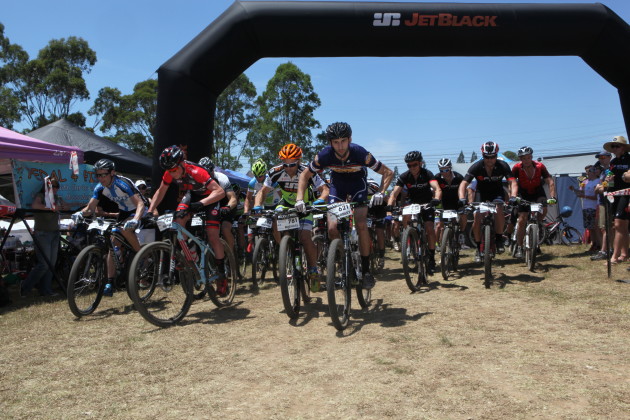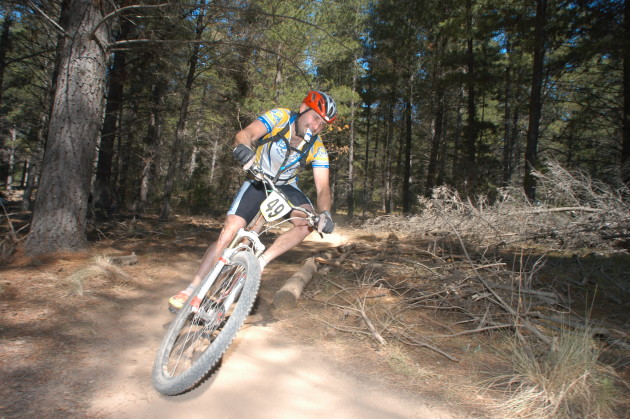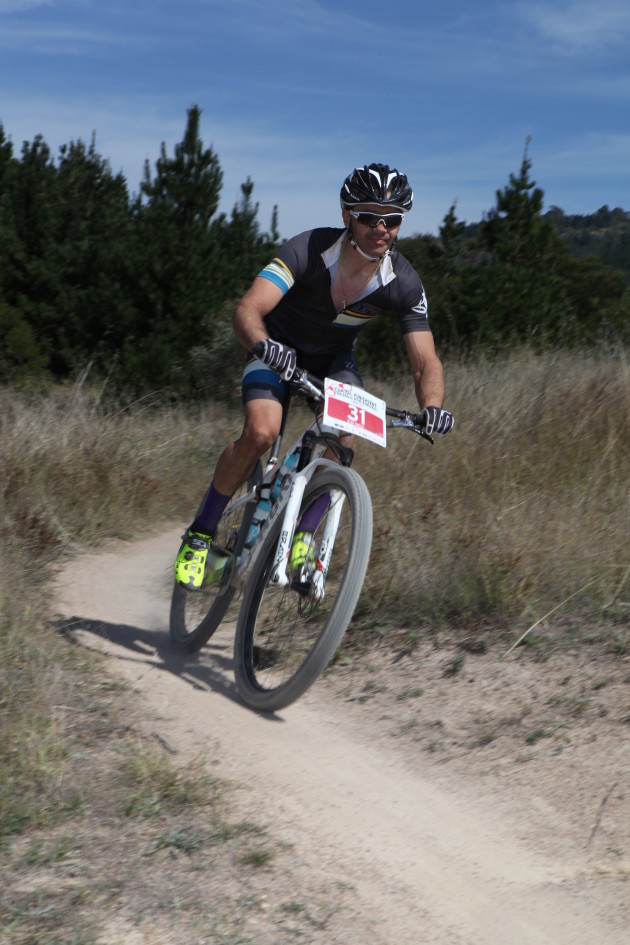With so many endurance MTB races being held across Australia nearly every week, from 50km half marathons to a multi-day stage races and everything in between, it has never been easier to get involved in this style of racing.
Of course there are many things that need be considered when planning for an endurance event, so here we will answer some of the questions that you may have. With a bit of guidance there’s no reason why you shouldn’t push the button on entering your first 50km marathon or stage race!
With work and life commitments demanding more and more from us, it might seem impossible to train and prepare for an endurance event. However, with a little structure and planning, a great level of fitness can be achieved in a relatively short amount of available time. Huge fitness gains can be achieved with only three or four rides a week.
First of all you need to be honest and realistic with yourself when it comes to determining the amount of time that you can devote to training. There is nothing worse than creating a schedule that you’re unable to complete. Failure on this front will lead to demotivation; you’ll probably wind up bailing entirely on the program and not doing the event.
Getting out early before work or trying to hit extra late night trainer sessions may look good on paper, but as the load and intensity increases, fatigue will creep in and rolling out of bed at 5am or jumping on the ergometer at 8pm gets harder and harder.
Think of ways to incorporate the training into your commute for instance—a great use of time where you’d usually be sat in a car. It doesn’t matter if it splits your training into two 30-minute sessions; this just means you can increase the intensity of each session and actually get more bang for your buck in the time you have available. Completing two or three commutes to work and back each week is a great way to get fit.

A basic outline for the week could look like this:
- Monday - Day off
- Tuesday - Ride to and from work. Go hard maintaining a solid pace and sprint away from the traffic lights.
- Wednesday - Easy roll to work and back or maybe just an easy MTB session after work with mates.
- Thursday - Commute to work and back maintaining a solid pace with sprints from the traffic lights again.
- Friday - Day off
- Saturday and/or Sunday - Longer endurance rides. Start off with a couple of hours on the MTB and increase the duration by 10 minutes or so each week. Add load gradually allowing the body time to adapt.
Hiring a coach can be a great way of fast tracking your training. They will help to organise your weekly training and offer guidance on what to do if you miss a day or have a cold. You may also gain event preparation tips and having a coach can also be a great motivator—adding an element of accountability is a sure-fire way of getting to the start line ready and prepared. If getting a coach feels like too big a step, you may prefer to look at an online training system such as ‘Today’s Plan’ (www.todaysplan.com.au). This type of service can provide you with a bespoke training program and allow you to monitor and quantify the fitness improvements along the way.
You also need to consider the terrain and environment that you’ll be covering during the race. Will it be singletrack or a combination of sandy beaches to open fire trail? Will it be freezing or blistering hot? It is important to gather this information as it may help to replicate these elements within your training.
There is no point riding fire trails during all of your training sessions if you will be cruising through sweet singletrack in the actual event. Try to get an understanding of the trails you will be riding on and look for areas near you where you can get practice over similar terrain. This way you’ll be targeting the actual physical demands in your training and you will be better prepared come race day.

Track your Training
With the advancement in technology there are many different tools that can aid training and allow you to get the most out of your time. Without a doubt the best training tool for the cyclist is a power meter, as it measures and quantifies the effort put into riding the bike. This measurement is not affected by external influences like environmental factors, dehydration, a lack of sleep and so on. As a result, power meters really are the best training tool for the job, they are however expensive and beyond the reach of most.
One of the cheapest and easiest ways to measure training intensity and load is with a heart rate monitor (HRM). They are relatively inexpensive and let you monitor the effort and intensity of your training. The downside to the HRM is that it suffers a lot of variation from one day to the next, as the readings are influenced by lifestyle factors such as stress, lack of sleep and diet.
Rate of perceived of exertion or ‘RPE’ is another means of measuring your effort. RPE is based on a scale of 1-10, from super easy to maximal effort. The downside to RPE is that is cannot be monitored accurately, as you will be feeling different from day to day—it results in variations similar to what you get when using a HR monitor. The use of RPE is the next most effective means of measuring training intensity if you don’t have access to the power meter or a heart rate meter previously mentioned.
Whether you employ a coach or sign up to an online coaching system, you will need to utilise one of these methods for quantifying your training load.
Event Plan
Following a training plan should leave you feeling fit and ready to tackle the event, but there are a number of other things that you’ll need to sort out before the big day. Consider the logistics and bike related needs and write yourself a list (see the Pre-Event Checklist).
Another thing to consider is your nutrition. It’s definitely worth carbo loading in the days immediately prior—see page 62. During the event you will need to maintain your intake of carbohydrates, and consuming roughly 50-60g of carbs per hour should see you through. This could take the form of gels, bars or fluids, whatever the case it’s important to find something that agrees with your stomach when riding.
Develop a habit of eating and drinking on the bike so that you get used to fuelling on the go. This will also help you to find products that agree with your digestive system—the last thing you need is gut ache or a toilet stop mid-race due to a poor nutritional decision. Ensure that you run through this long before the day of the event.
Come the morning of your event, get up early enough to consume some breakfast without over eating. If you’ve eaten well in the days prior, your body’s glycogen stores should be full and a light liquid breakfast is often the best choice as it’s absorbed and digested into the system very quickly. Aim to start your race with the gut lining being empty of solid food, this will allow your body to absorb nutrition better during your race. Make sure you carry out a warm up within the hour prior to your event. It doesn’t need to be too extensive but a 10-15 minute increasing intensity effort will get the body ready for the start. Once you’re warmed up, roll around the start line so that you’re ready to go.

Race Plan
When you’re lining up for the start, it’s best to place yourself with riders of similar fitness, or just line up where you feel comfortable. Don’t get yourself right up near the front if you are not at that level of fitness yet. Doing so will force you to start too hard and all of your best laid plans for completing the ride will be thrown out the window. There’s also a good chance you’ll hinder the progress of faster, more technically gifted riders once you enter the first sections of singletrack.
Be wary of going too hard off the start line. It’s very easy to get caught up when the ‘red mist’ descends and the adrenaline is pumping! Monitor your initial effort; and use the following guide:
• If you think you are going too hard off the start, then you are going too hard!
• If you think you are going just right, then you are still going too hard!
• If you think you are going too easy, then you are probably doing just fine.
You will be surprised by how much better you’ll feel in the second half of the event if you get your pacing strategy correct. A way of monitoring this could be to set your heart rate monitor to give a warning if you are pushing too hard. You will know what you are able to sustain from your training, so don’t think you will suddenly be able to go much harder or faster in the event, you will simply blow up and not achieve what you set out to do.
In the heat of competition, don’t forget to implement your eating and drinking plan. Use every available opportunity to eat and drink. Look for fire road sections and any less technical area where you can get to your bottle or consume a gel without slowing down too much. Don’t miss a feed as it will impact you later in the event; if this means slowing down to eat and drink then do it.
With good preparation and a fully serviced bike, you’ll minimise the chances of a mechanical problem. Of course things can still go wrong, so it’s worth having some contingency plans. The main key is not to panic and simply put your plan into action. Most of the time it will be a puncture or a sidewall slash. With a good plan, you may only be delayed by a few minutes—time that may allow you to shove down an energy bar and have a micro-rest. Remember that rushing will force mistakes and make you slower, so when things don’t go to plan it’s best to relax and take it easy.
Post Event
There’s a very good chance that you’ll be absolutely smashed when you finish, but it’s very important to consider your recovery. Have a recovery shake or eat some pre-prepared sandwiches as soon as you finish. Eat and drink well immediately after the ride and you’ll feel better sooner and ready to take on the next challenge. Also, it is amazing how much better you will feel by simply getting clean. I like to have a towel off and get out of my stinky cycling clothes ASAP.
During the next two to four days it is important to do some very light and easy recovery rides. Aim to ride for 30-60 minutes at an intensity that’s similar to walking. Do this the day after the race and then have a couple of days completely off the bike.
While you’re at it, book a session with a masseuse and cold baths are also great for helping the healing process.
Once you have recovered and the event is still fresh in the mind, it’s important to go over the details and log your positives and the negatives. Look at your gear choice, pacing, eating and hydration plans. Putting all the info down will help you plan for an even better performance next time around. If the event went totally to plan then great. Don’t beat yourself up about it if things went wrong; learn from the experience and use the negatives to fuel and create positive change for next time.
So there you go, now it’s time to get out there and find some events to enter and lock the dates in. Don’t hold back or wait to enter the race you have been dreaming about, start training, ride hard and remember to remain committed to your training and yourself.

Pre-Event Checklist
This list is intended as a general guide—add or remove items to suit the type of event that you’re doing. Write your list and lay your gear out, ticking items off as you pack your travel bag. This way, things don’t get left behind—you don’t want to ruin your chances after all the work that you’ve put into the preparation!
• Accommodation at race venue
• Get the bike serviced
• Bike and maybe even take a back-up bike if you have one
• Spare tyres
• Chain link
• Tools; allen keys, chain breaker etc.
• Spare gear cables and cable ties
• Chain lube and rag
• Tubes and/or sealant
• Electrical tape
• Pump and/or CO2 canister
• Water
• Event nutrition
• Water bottles or hydration pack
• Clothing for climate; rain jacket, arm warmers and so on
• Lights depending on event being raced
• Pre and post-race nutrition; bars, gels and carbo drinks
• Helpers at race; consider whether you need a friend or partner to assist with food or providing fluids out on course, or maybe you’ll just need to share the drive home.








